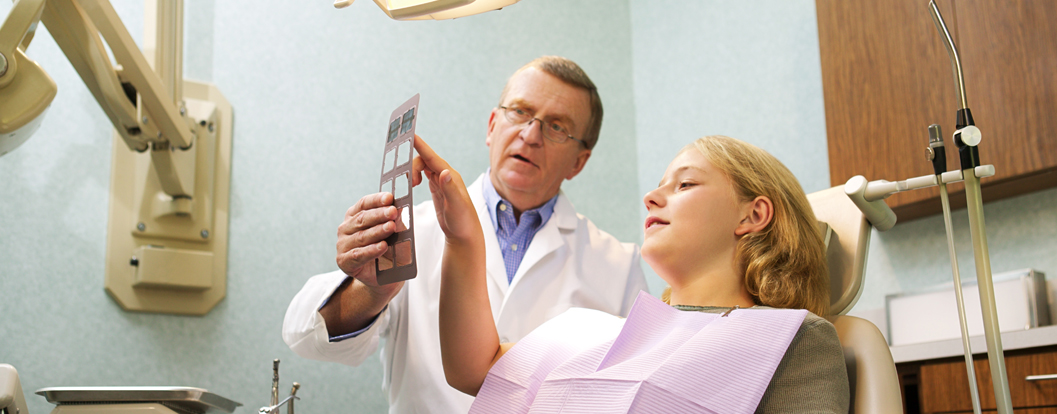As a parent, you wear a lot of hats: gourmet chef, storyteller extraordinaire, piggyback ride giver, homework consultant…and after reading this, you’ll be ready to take on your newest challenge: Dental Hygiene Expert.
But first: the cold, hard facts. Did you know that 10% of two-year-olds already have at least one cavity? And by age three, over a quarter of kids have their first cavity. That number jumps to almost 50% by the age of five. (Learn more about those dreaded cavities.)
So…where do we start?
The answer is your baby’s first teeth – known as primary teeth. Some parents might think cavities in baby teeth are no big deal. They’re going to lose them anyway. But tooth decay in baby teeth can impact permanent teeth.
Primary Teeth – Get Started Early!
While baby teeth may seem like an adorable placeholder for permanent ones, they serve an essential role in keeping a child’s jaw straight and holding space for adult teeth. Primary teeth can help kids learn how to chew, smile, and even talk.
Before baby teeth even appear, it’s a great idea to get in the daily habit of wiping your child’s gums with a soft washcloth. It removes bacteria and starts them off with a regular dental routine. When those first teeth finally pop out, we suggest brushing twice a day for two minutes, using just a tiny bit of fluoride toothpaste — about the size of a grain of rice. And always use an ultra-soft toothbrush. Also…
- Watch that bottle! Putting a child to bed with a bottle of juice, milk, or formula can quickly lead to tooth decay.
- Don’t forget the dentist. Your pediatrician will probably check your child’s teeth – and may refer you to a pediatric dentist. But be sure to schedule that first dental checkup before your child’s first birthday – or after the first baby tooth has arrived.
By the age of three, your child should have all 20 primary teeth. Then you have about a three-year delay before visits from the Tooth Fairy start becoming a thing. At this point, your child is learning to brush – and developing dental habits to last a lifetime. Now is where your impact as a dental hygiene expert gets even more prominent.
The Art of Proper Tooth Brushing (and So Much More)
Make sure your child brushes for at least two minutes twice a day, using a pea-sized dab of fluoride toothpaste. Up and down? Back and forth? Circles? It doesn’t matter. You want to give each tooth a thorough cleaning. Most kids only focus on the front teeth and need help reaching those pesky back teeth. In fact, many will need help brushing their teeth altogether up until the age of 6 or 7, so constant supervision and a lot of parental participation is your best bet.
Need help getting them to brush for the entire two minutes? Set a timer, or better yet, play their favorite song to help keep track of time. (Get more fun brushing ideas!
Now that you’re a dental superstar, you know many moving parts go into creating and nurturing a healthy smile. Things like:
- Flossing: best to start as soon as your child’s teeth touch.
- Dental visits: schedule an appointment every six months. The more regular your child’s visits are at an early age, the less stressful future visits will be.
- Mouthwash: a great addition to the routine, but no gulping down that minty freshness!
- Sugar: you’ve heard it before, but limit sweets, especially sticky, sugary treats that can get quite attached to your child’s teeth (and turn into little cavity factories)!
- Outside protection: establish a “no chew” list for your kiddo, metal, and plastic objects for starters. And when it comes to bikes, scooters, and skateboards, always throw on a helmet.
Congrats, you’re now an official Dental Hygiene Expert (feels good, doesn’t it?). Why not join the conversation today by following us on Facebook and Instagram? If you know a child who lost their tooth, have them send the tooth fairy a letter and get an email reply!

